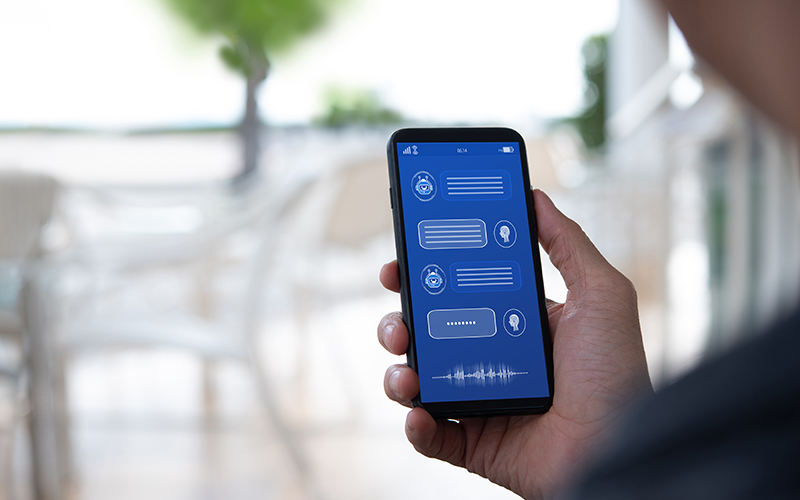Business Transformation
AI-powered deep fakes: How to identify them?
Sci-fi fandom is rife on the iconic Terminator media franchise. The first movie of the franchise that pitted man vs. machine morphed into a machine vs. machine fight in the second. Without going into the lore, it’s sufficient it to say that the Terminator movies showcased the best of deep fakes. In the second movie of the franchise, T-1000 machines could take on the facial features of any human, making them unrecognisable from humans - a deep fake!
It sure feels like we’re going back to the future in 2022. Deep fakes are rife in the digital world today. Some of the actions and consequences of deep fake activity are certainly proving to be catastrophic.
Let’s start by looking at Artificial Intelligence (AI) itself. The ‘age of the machines’ is well and truly here, with AI influencing what we watch, what we buy, and how we interact with many systems via chatbots, robotic process automation (RPA systems) and more. The benefits of AI are undeniable - from smart decision-making and predictions for various sectors to supporting advances in medicine, from managing repetitive tasks to optimizing business continuity, AI has been helping mankind in myriad ways. AI continues to make organizations more agile and hyper-productive.*
But deep fakes are a troubling fallout of all the AI advancements. The phrase is a portmanteau of the terms ‘deep learning’ and ‘fakes’. You may have laughed at deep fake videos of some celebrities and politicians. But the technology, touted as the 21st century’s answer to Photoshop, can bypass image or speech recognition and classification systems and result in losses of millions of dollars for enterprises. Companies that rely on facial recognition systems are especially vulnerable to such attacks.
Even law enforcement agencies such as the FBI have released statements related to deep fakes. The FBI has identified foreign players using synthetic profile images from Generative Adversarial Networks (GANs) to influence domestic campaigns. The FBI further goes on to describe fake personas of ‘journalists’ putting out content using fraudulent profiles. They may further lead spear-phishing and social engineering attacks, per the FBI.
The manipulation of deep fakes has taken on frightening possibilities. Some people claim that synthetic content has already been at play, undergirding mass media manipulations. Regardless of big or small scams, the fallout can be terrible: hurting innocent people, putting lives at risk, and resulting in millions of dollars of damages.
Identifying deep fakes
Deep fakes or synthetic content are extremely hard to identify as AI gets more sophisticated by the day. It takes an expert eye to recognise the visual tells in deep fake videos - warping or distortions, unnatural head or torso movements, or inconsistencies in syncing between lip movements and audio. Forensic technologists have been racing to keep abreast of deep fake developments They are striving to develop appropriate detection frameworks and algorithms. One popular, yet simple, methodology, put forth by the FBI is “SIFT”: Stop - Investigate the source - Find trusted coverage - Trace the original content when consuming content online.
Yet, the fear is that this advice may be simplistic in an era when social media messages can trigger mass uprisings. People may not have the inclination to SIFT, and may instead, give in to instincts of the instant that fuel mob mentalities. What then, are the options for governments and regulators? As always, awareness and governance can be a way forward. Building awareness campaigns about the power of deep fakes should be important for regulators, especially before major elections or large events.
Companies and industries can set up AI Governance Committees that monitor activities in AI usage and plan for eventualities. Researchers recommend funding initiatives such as building reverse video search engines or using blockchain-based verification systems for online content. Social science researchers must invest in projects where they examine large social media datasets to understand how disinformation campaigns are built and devise solutions to counter them.
*For organizations on the digital transformation journey, agility is key in responding to a rapidly changing technology and business landscape. Now more than ever, it is crucial to deliver and exceed on organizational expectations with a robust digital mindset backed by innovation. Enabling businesses to sense, learn, respond, and evolve like a living organism, will be imperative for business excellence going forward. A comprehensive, yet modular suite of services is doing exactly that. Equipping organizations with intuitive decision-making automatically at scale, actionable insights based on real-time solutions, anytime/anywhere experience, and in-depth data visibility across functions leading to hyper-productivity, Live Enterprise is building connected organizations that are innovating collaboratively for the future.






